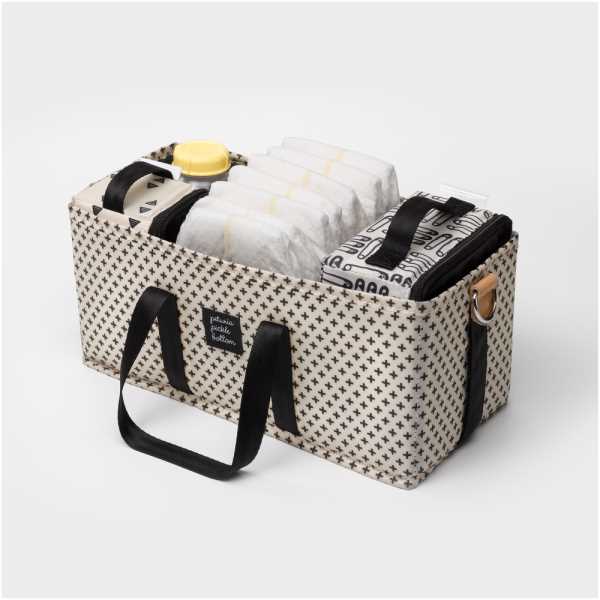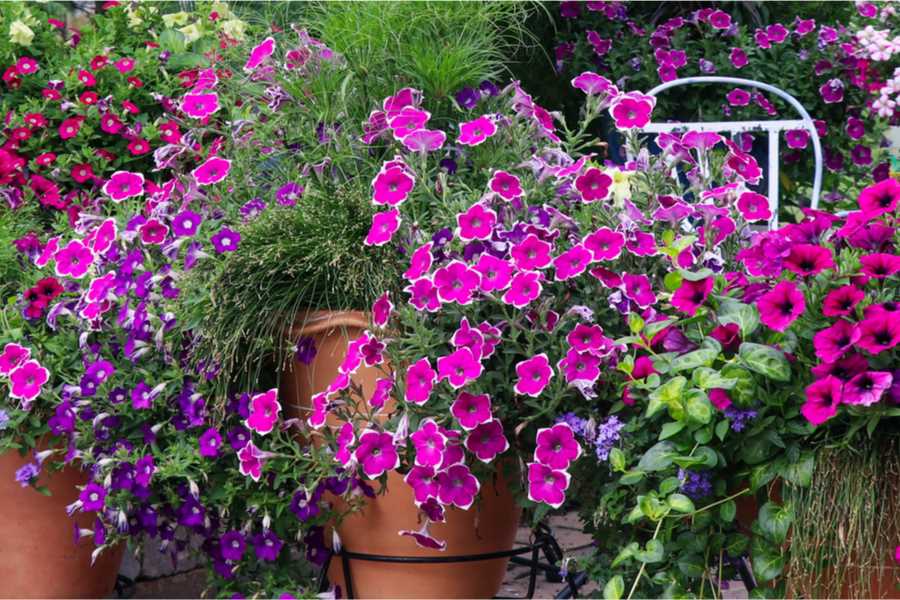- The Importance of Intermediate Pickling
- What is intermediate pickling?
- The benefits of intermediate pickling
- How to perform intermediate pickling
- In conclusion
- In Petunia Cultivation
- The Significance of Intermediate Pickling
- The Role of Intermediate Pickling
- Improved Nutrient Absorption
- Air Circulation and Light Penetration
- Prevention of Overcrowding
- Facilitation of Harvesting and Maintenance
- In Petunia Growth and Development
- 1. Germination and Seedling Stage
- 2. Vegetative Growth
- 3. Flowering Stage
- 4. Fruit and Seed Formation
- 5. Dormancy and Winter Care
- How Intermediate Pickling Affects
- 1. Enhances Root Development
- 2. Stimulates Flowering
- 3. Improves Plant Shape and Structure
- 4. Prevents Disease and Pest Infestation
- 5. Encourages Longer Blooming Period
- Petunia Yield and Quality
- Yield
- Quality
- Conclusion
- The Process of Intermediate Pickling
- 1. Selecting the Right Stage
- 2. Preparing the Pickling Solution
- 3. Applying the Pickling Solution
- 4. Monitoring and Adjusting
- 5. Continuing Care
- In Petunia Cultivation
- The Impact of Intermediate Pickling
- Increased Flower Production
- Enhanced Flower Quality
- Uniform Flowering Time
- Influence on Plant Health
- Conclusion
- On Petunia Disease Resistance
- Common Diseases in Petunias
- Importance of Disease Resistance
- Developing Disease-Resistant Petunias
- Conclusion
- Questions and Answers:
- What is intermediate pickling?
- Why is intermediate pickling important in petunia cultivation?
- How is intermediate pickling done in petunia cultivation?
- When should intermediate pickling be done in petunia cultivation?
- Are there any risks or disadvantages associated with intermediate pickling?
- Videos: ★ How to Collect Petunia Seeds (A Complete Step by Step Guide)

Intermediate pickling is a crucial technique in petunia cultivation that plays a significant role in the overall health and productivity of the plants. It involves the removal of lateral buds from the main stem of the plant, allowing it to focus its energy on developing a strong central shoot. This technique has been proven to enhance the quality of the plants, leading to higher flower yield and improved disease resistance.
By removing the lateral buds, growers can ensure that the petunia plants grow in a more upright and compact manner. This leads to a higher flower-to-leaf ratio, making the plants more visually appealing and improving their marketability. Additionally, intermediate pickling promotes better air circulation and light penetration, reducing the risk of diseases such as powdery mildew and botrytis.
Intermediate pickling is typically carried out when the petunia plants reach a certain stage of growth, usually when they have developed 3-4 pairs of true leaves. Care must be taken during the process to avoid damaging the main stem or removing too many buds, as this can stunt the plant’s growth. It is recommended to use sharp, sterilized tools and to sanitize them between each plant to prevent the spread of diseases.
In conclusion, intermediate pickling is an essential technique in petunia cultivation that can significantly improve the overall health and productivity of the plants. By removing lateral buds, growers can promote better growth, higher flower yield, and improved disease resistance. This technique should be practiced with care and precision to ensure the best results and to maintain the quality of the plants.
The Importance of Intermediate Pickling
Intermediate pickling is a crucial step in the cultivation of petunias. It plays a significant role in ensuring the health and vitality of the plants throughout their growth cycle. By understanding the importance of intermediate pickling, growers can maximize the quality and yield of their petunias.
What is intermediate pickling?
Intermediate pickling refers to the process of selectively removing the side shoots and young buds from the petunia plants. This step is typically performed after the initial planting and before the final pruning. The purpose of intermediate pickling is to shape and direct the growth of the plants, promoting optimal branching and blooming.
The benefits of intermediate pickling
Intermediate pickling offers several benefits to petunias, including:
- Improved air circulation: By removing excess foliage and buds, intermediate pickling allows for better air circulation within the plant canopy. This reduces the risk of fungal diseases and promotes overall plant health.
- Enhanced branching: By selectively removing side shoots, intermediate pickling encourages petunia plants to develop a more compact and bushy growth habit. This results in increased branching and more abundant flowering.
- Increased flower production: By removing young buds, intermediate pickling redirects the plant’s energy towards existing flowers, stimulating their growth and prolonging their lifespan. This leads to a higher overall flower production.
- Uniformity of growth: Intermediate pickling helps ensure that petunias grow in a more uniform manner, with consistent branching patterns and overall size. This is desirable for commercial growers who need plants with similar growth habits for display or resale.
How to perform intermediate pickling
The process of intermediate pickling involves carefully removing the side shoots and young buds from the petunia plants. This can be done using sharp scissors or pruning shears. It is important to be gentle and avoid damaging the main stems or existing flowers.
- Select a healthy and well-established petunia plant.
- Identify the side shoots and young buds that need to be removed for optimal growth and branching.
- Carefully cut off the identified side shoots and buds, ensuring a clean and precise cut.
- Dispose of the removed plant material properly to prevent the spread of diseases.
- Repeat the intermediate pickling process for all the petunia plants in your cultivation area.
In conclusion
Intermediate pickling is a critical step in petunia cultivation that significantly impacts the health, growth, and flower production of the plants. By understanding the benefits and proper techniques of intermediate pickling, growers can optimize the quality and yield of their petunias, ensuring vigorous and vibrant plants that are a delight to behold.
In Petunia Cultivation
The Significance of Intermediate Pickling
Petunias are popular flowering plants known for their vibrant colors and ability to thrive in various conditions. In order to cultivate healthy and beautiful petunias, intermediate pickling plays a significant role in their growth and development.
Intermediate pickling is a process that involves the removal of lateral buds or side shoots in petunia plants. This practice helps promote better plant architecture, increased flower production, and improved overall plant health. Here are some key reasons why intermediate pickling is important in petunia cultivation:
- Enhanced Flowering: By removing lateral buds or side shoots, energy is redirected towards the growth of the main flower stems. This leads to a higher production of flowers and prolongs the flowering period, resulting in a more visually appealing and attractive display of blooms.
- Improved Air Circulation and Disease Prevention: Intermediate pickling helps create a more open and structured plant canopy. This allows for better airflow and reduces the chances of diseases, such as fungal infections, as well as pests. Good air circulation also prevents the development of moisture-related issues, such as bud rot or powdery mildew.
- Positive Impact on Plant Growth: By removing lateral buds, the energy that would have been used for their growth is redirected toward the development of the main stem, leaves, and flowers. This promotes stronger and healthier plant growth, resulting in more vigorous and robust petunia plants.
- Better Aesthetic Appearance: Intermediate pickling helps maintain a neat and well-structured plant shape, preventing the plant from becoming leggy or unruly. This results in a more visually pleasing appearance, making the petunia plants an excellent addition to gardens, hanging baskets, and containers.
It is important to note that intermediate pickling should be done at the right time and with proper technique. The best time to perform intermediate pickling is when the lateral buds are approximately 2-3cm long. The removal of these buds should be done carefully, using clean and sterilized pruning shears or scissors.
In conclusion, intermediate pickling plays a vital role in petunia cultivation by enhancing flowering, promoting plant health, and improving overall plant aesthetics. By practicing this technique, growers can enjoy a more abundant and visually appealing display of petunia blooms.
The Role of Intermediate Pickling
Intermediate pickling is an essential practice in petunia cultivation that plays a crucial role in enhancing the overall growth and development of the plants. It involves the process of removing the lateral branches from the main stem of the petunia plant in order to promote vertical growth and encourage better flower production.
Improved Nutrient Absorption
By removing the lateral branches, intermediate pickling allows the main stem of the petunia plant to receive a higher concentration of nutrients. This results in improved nutrient absorption and helps in providing essential elements required for the growth and development of the plant. The increased nutrient uptake ultimately leads to healthier and more vigorous petunia plants.
Air Circulation and Light Penetration
Intermediate pickling also contributes to better air circulation and light penetration within the petunia canopy. By removing the lateral branches, it opens up the plant structure and helps in creating space for air movement. This reduces the risk of fungal diseases and improves the overall health of the plants. Additionally, better light penetration ensures that all parts of the plant receive adequate sunlight, promoting uniform growth and enhancing flower production.
Prevention of Overcrowding

Another important role of intermediate pickling is to prevent overcrowding within the petunia plants. Lateral branches tend to grow horizontally and can quickly occupy valuable space within the plant canopy. By removing these branches, intermediate pickling helps in maintaining an optimal plant density, which is crucial for ensuring adequate nutrient availability and efficient use of resources.
Facilitation of Harvesting and Maintenance

One of the practical benefits of intermediate pickling is that it facilitates easier harvesting and maintenance of the petunia crop. With the lateral branches removed, it becomes easier to access and pick the flowers. Additionally, the open structure resulting from intermediate pickling allows for better visibility and accessibility when it comes to pruning, weeding, and other maintenance activities.
In conclusion, intermediate pickling is a crucial practice in petunia cultivation that significantly contributes to the overall growth, development, and productivity of the plants. By improving nutrient absorption, promoting air circulation and light penetration, preventing overcrowding, and facilitating easy maintenance, intermediate pickling plays a vital role in ensuring healthy and thriving petunia plants.
In Petunia Growth and Development
Petunias are popular flowering plants known for their vibrant colors and pleasant fragrance. They belong to the family Solanaceae and are native to South America. Petunias are widely cultivated in gardens and as ornamental plants due to their ability to thrive in various environmental conditions.
1. Germination and Seedling Stage
Germination is the process by which a seed develops into a new plant. Petunia seeds require warm temperatures to germinate and usually take about 7-10 days to sprout. During this stage, the seeds absorb water and swell, causing the seed coat to break open.
Once the seedlings emerge, they develop cotyledons, which are the first leaves. These leaves provide nutrients for the early growth of the plant. As the seedlings continue to grow, true leaves appear, and the plant starts establishing its root system.
2. Vegetative Growth
During the vegetative growth stage, the petunias focus on developing a strong root system and producing more leaves and branches. The root system plays a crucial role in absorbing water and nutrients from the soil, while the leaves perform photosynthesis to provide energy for the plant’s growth.
Proper watering, sunlight, and regular fertilization with appropriate nutrients are essential to promote the healthy vegetative growth of petunias. Pruning can also be carried out during this stage to shape the plant and encourage branching.
3. Flowering Stage

Once the petunia plants reach maturity, they start producing flowers. Petunia flowers come in a variety of shapes, sizes, and colors, depending on the cultivar. They are typically funnel-shaped, with five petals. Petunias are known for their vibrant colors ranging from white and pink to red, purple, and even striped patterns.
The flowering stage is the most visually appealing phase of petunia growth. Adequate sunlight, regular watering, and proper maintenance are crucial to ensure abundant and long-lasting blooms. Deadheading or removing faded flowers promotes continuous blooming by diverting the plant’s energy from seed production to flower formation.
4. Fruit and Seed Formation
After the flowers have been pollinated, the petals fall off, and the ovary develops into a fruit. In the case of petunias, the fruit is a capsule containing numerous small seeds. These seeds can be harvested and used for propagating new petunia plants.
Allowing some of the flowers to remain on the plant and go to seed can result in self-seeding, which allows the petunias to reproduce naturally in the garden.
5. Dormancy and Winter Care
Petunias are typically treated as annual plants, meaning they complete their life cycle within one year. In colder climates, petunias may not survive the winter and go dormant. It is essential to provide proper winter care if you plan to overwinter petunias.
Before the first frost hits, consider bringing container-grown petunias indoors or providing a protective cover to the plants in the garden. Adequate warmth, reduced watering, and occasional pruning help petunias survive the winter and prepare them for regrowth in the following spring.
Understanding the different stages of petunia growth and development can help gardeners provide the necessary care for these beautiful flowers. With the right conditions and care, petunias can thrive and bring vibrant colors to any garden or landscape.
How Intermediate Pickling Affects
Intermediate pickling is an essential technique in petunia cultivation that significantly impacts the overall growth and development of the flowers. In this section, we will explore the various ways in which intermediate pickling affects petunia cultivation.
1. Enhances Root Development

Intermediate pickling plays a crucial role in promoting root development in petunia plants. By removing the lateral buds and trimming the main stem, the plant’s energy is redirected towards the growth of the root system. This results in a stronger and more extensive root network, allowing the plant to absorb nutrients more efficiently and enhancing overall plant health.
2. Stimulates Flowering
The process of intermediate pickling stimulates flowering in petunia plants. By removing the lateral buds, the plant’s energy is focused on the remaining flower buds, resulting in a higher number of blooms. This technique also encourages the development of larger and more vibrant flowers, making the plant more visually appealing.
3. Improves Plant Shape and Structure
Intermediate pickling helps maintain a desirable plant shape and structure. By regularly pinching back the lateral shoots, the plant can be trained to grow in a more compact and bushy form. This is especially important in petunia cultivation, as a compact and well-branched plant produces a larger number of flowers and creates a fuller, more attractive display.
4. Prevents Disease and Pest Infestation
Through the process of intermediate pickling, weak and diseased plant parts can be removed, reducing the risk of disease spread and pest infestation. By regularly inspecting and pruning the plant, growers can identify and eliminate any infected or damaged areas before they become a serious problem. This proactive approach to plant care helps maintain the overall health and vigor of the petunia plants.
5. Encourages Longer Blooming Period
Intermediate pickling can extend the blooming period of petunias. By removing spent flowers and promoting the growth of new flower buds, the plant continuously produces blooms throughout the growing season. This not only extends the overall duration of flowering but also ensures a steady supply of fresh blooms for ornamental purposes.
In conclusion, intermediate pickling has a significant impact on petunia cultivation by enhancing root development, stimulating flowering, improving plant shape and structure, preventing disease and pest infestation, and encouraging a longer blooming period. This technique is a valuable tool for growers to maximize the growth and visual appeal of petunia flowers.
Petunia Yield and Quality
The yield and quality of petunia plants are crucial factors in determining the success of a cultivation project. Both of these aspects are directly influenced by the intermediate pickling process and the care taken during the entire cultivation process.
Yield
- The yield of petunia plants refers to the amount of flowers or plant material that can be harvested.
- The intermediate pickling process plays a significant role in increasing the yield of petunias.
- By removing some of the flowers during intermediate pickling, the remaining flowers receive more nutrients and energy from the plant.
- This stimulates the growth of larger, more vibrant flowers, ultimately leading to a higher yield.
- Additionally, proper watering, fertilization, and pest control measures can also contribute to maximizing the yield of petunias.
Quality

- The quality of petunias is determined by factors such as the size, color, fragrance, and overall health of the flowers.
- Intermediate pickling plays a crucial role in enhancing the quality of petunias by allowing for better nutrient absorption and growth.
- During intermediate pickling, any weak or diseased flowers are removed, ensuring that only the healthiest and most vibrant flowers remain.
- This results in a higher quality of petunias with larger, more colorful blooms and a longer vase life.
- Careful attention to watering, fertilization, and pest control also contribute to maintaining the quality of petunias throughout the cultivation process.
Conclusion
Overall, the yield and quality of petunias are greatly influenced by the intermediate pickling process and the care taken during cultivation. By implementing proper pickling techniques and providing optimal growing conditions, cultivators can expect to achieve higher yields with superior quality petunias. This will lead to increased market value and customer satisfaction.
The Process of Intermediate Pickling
Intermediate pickling is a crucial step in the cultivation of petunias. It involves carefully selecting the appropriate stage of plant growth and using a specific solution to prepare the plants for further development. This process plays a significant role in the success of petunia cultivation, as it helps to improve the overall health and vigor of the plants.
1. Selecting the Right Stage

Before starting the intermediate pickling process, it is important to select the right stage of plant growth. Typically, this stage occurs when the plants have developed several sets of true leaves and have a well-established root system. At this point, the plants are strong enough to withstand the pickling solution and will benefit from the process.
2. Preparing the Pickling Solution
The pickling solution is made by mixing various ingredients that will promote healthy growth and development in petunias. The exact composition may vary depending on specific needs, but typically includes nutrients such as nitrogen, phosphorus, and potassium. It is important to carefully follow the instructions and use the correct proportions to ensure optimal results.
3. Applying the Pickling Solution
Once the pickling solution is prepared, it is carefully applied to the plants. This can be done by dipping the roots of the plants into the solution or by spraying it onto the foliage. The pickling solution helps to nourish the plants and strengthen their resistance to diseases and pests. It also promotes root development and overall plant growth.
4. Monitoring and Adjusting
After the pickling process is complete, it is important to monitor the plants closely. Check for any signs of stress or nutrient deficiencies and make any necessary adjustments to the growing conditions. This may involve adjusting the lighting, temperature, or humidity levels, as well as providing additional nutrients if needed.
5. Continuing Care
The intermediate pickling process is not a one-time event but rather a part of an ongoing care routine for petunias. Continue to provide regular care, such as watering, fertilizing, and pruning, to ensure the healthy development of the plants. Regular monitoring and adjustment will help to maintain a thriving petunia cultivation.
In Petunia Cultivation
Petunias are popular flowering plants that are widely cultivated for their beautiful blooms. They come in a variety of colors and have a delicate and attractive appearance. Petunias are easy to grow and are commonly used in gardens, hanging baskets, and containers.
Propagation:
- Petunias can be propagated by seeds or cuttings. Seeds are readily available and can be sown directly in the soil or started indoors.
- Cuttings can be taken from existing plants to produce new ones. This is a popular method among gardeners to ensure the plants have the desired characteristics.
Growing Conditions:
- Petunias prefer full sun and well-draining soil.
- They can tolerate a wide range of temperatures, but are not frost-tolerant.
- Regular watering is essential to keep the soil evenly moist. However, overwatering should be avoided as it can lead to root rot.
- Fertilization is important for healthy growth and abundant blooms. A balanced fertilizer can be applied every few weeks during the growing season.
Pickling:
Intermediate pickling is a technique used in petunia cultivation to promote branching and compact growth. It involves removing the apical meristem, which is the growing tip of the main stem. This stimulates the growth of lateral branches and results in a bushier plant.
Benefits of Intermediate Pickling:
- Improved branching: Intermediate pickling encourages the development of multiple lateral branches, creating a fuller and more compact plant.
- Increased flower production: With more branches, petunias produce more flower buds, leading to a more abundant display of blooms.
- Enhanced appearance: The bushier growth habit achieved through intermediate pickling gives petunias a more attractive and well-balanced appearance.
- Easier maintenance: Compact petunias require less pruning and are easier to manage in containers or hanging baskets.
- Extended blooming period: When done correctly, intermediate pickling can delay the blooming of petunias, resulting in a longer flowering period.
How to Pickle Petunias:
- Begin pickling when the plants have developed a few true leaves and are at least 4 inches tall.
- Using clean and sharp scissors or pruners, cut off the top portion of the main stem just above a set of leaves.
- Make the cut at a slight angle to prevent water from accumulating on the cut surface.
- Remove any flower buds that have started to form to redirect the plant’s energy towards branching.
- Continue to provide the plants with proper care, including regular watering and fertilization, to ensure their healthy growth.
Conclusion:
Intermediate pickling is a valuable technique in petunia cultivation that can significantly enhance the growth and appearance of these popular flowering plants. It promotes branching, increases flower production, and creates a more balanced and attractive plant. By following proper pickling techniques and providing optimal growing conditions, gardeners can enjoy the beauty of petunias for a longer period of time.
The Impact of Intermediate Pickling

Increased Flower Production
The process of intermediate pickling in petunia cultivation is a crucial step that has a significant impact on flower production. By subjecting the petunia plants to an intermediate pickling stage, growers can stimulate the plant’s reproductive system, resulting in increased flower production.
During the intermediate pickling process, the petunia plants are exposed to specific environmental conditions that mimic the transition from vegetative growth to flowering. This exposure triggers hormonal changes in the plants, leading to the development of flower buds.
Enhanced Flower Quality
In addition to increasing flower production, intermediate pickling also plays a vital role in enhancing the quality of the flowers. The hormonal changes induced by the pickling process not only stimulate flower development but also improve their size, color, and fragrance.
Through careful control of the pickling conditions, growers can manipulate the flowering characteristics of petunia plants. By adjusting factors such as temperature, light intensity, and photoperiod, it is possible to produce petunia flowers with desired traits, such as larger blooms or more vibrant colors.
Uniform Flowering Time
One of the key advantages of intermediate pickling is its ability to promote uniform flowering time in petunia cultivation. By subjecting all plants to the same pickling conditions, growers can synchronize the flowering process and ensure consistent bloom times.
This uniformity in flowering time is particularly important for commercial petunia growers who need to produce consistent and reliable crops for market. It allows for better planning and management of production schedules, as well as ensuring that all plants reach their peak bloom simultaneously.
Influence on Plant Health
Intermediate pickling not only impacts flower production and quality but also plays a role in maintaining the overall health and vigor of petunia plants. By subjecting the plants to this specialized stage, growers can enhance the plant’s resilience to environmental stressors and diseases.
The hormonal changes induced by intermediate pickling help strengthen the plant’s immune system and improve its ability to withstand adverse conditions. This, in turn, reduces the risk of diseases and ensures that the plants remain healthy throughout their lifecycle.
Conclusion
In conclusion, intermediate pickling is a crucial step in petunia cultivation that has a significant impact on flower production, quality, uniformity, and plant health. By carefully controlling the pickling conditions, growers can manipulate the flowering characteristics of petunia plants to meet specific market demands. This process enhances the overall success and profitability of petunia cultivation.
On Petunia Disease Resistance
Petunias are known for their beautiful flowers and vibrant colors, but they are also susceptible to various diseases. Disease resistance is an important trait to consider when cultivating petunias, as it can significantly impact the health and productivity of the plants.
Common Diseases in Petunias
Petunias can be affected by a range of diseases, including:
- Botrytis blight: This fungal disease can cause gray mold on petunia flowers, leaves, and stems.
- Powdery mildew: A common fungal infection that manifests as a powdery white coating on the leaves and stems.
- Leaf spot: This fungal disease appears as small, dark spots on the leaves. It can lead to leaf yellowing and premature leaf drop.
- Root rot: Moist soil conditions can cause root rot, which affects the roots and can lead to wilting and stunted growth.
Importance of Disease Resistance
Disease resistance is crucial in petunia cultivation for several reasons:
- Disease-resistant petunias are more likely to thrive and produce healthy flowers, thereby improving the aesthetic appeal of the plants.
- By choosing disease-resistant varieties, growers can reduce the need for chemical fungicides, promoting environmentally friendly cultivation practices.
- Resistance to diseases allows petunias to withstand unfavorable growing conditions and maintain their vigor, leading to higher productivity.
- Disease resistance helps minimize the spread of pathogens, reducing the risk of infecting other plants in the vicinity.
Developing Disease-Resistant Petunias
Breeders have been working on developing disease-resistant petunia varieties. This involves crossbreeding plants with desirable disease resistance traits and selecting offspring with the highest resistance levels.
Additionally, growers can take preventive measures to minimize disease incidence, such as:
- Ensuring proper spacing between plants to maximize air circulation and reduce humidity, which can contribute to disease development.
- Using well-draining soil and avoiding overwatering to prevent root rot.
- Applying organic fungicides or biological control agents as a preventive measure.
- Cleaning up and removing any infected plant debris to prevent the spread of pathogens.
Conclusion
Disease resistance is a vital aspect of petunia cultivation. By selecting disease-resistant varieties and implementing proper preventive measures, growers can ensure healthier and more productive petunia plants, providing stunning colors and blooms for both professional and amateur gardeners.
Questions and Answers:
What is intermediate pickling?
Intermediate pickling is a technique used in petunia cultivation where the plants are temporarily removed from the growing medium to promote better root development and overall plant growth.
Why is intermediate pickling important in petunia cultivation?
Intermediate pickling is important in petunia cultivation because it helps to stimulate root development, increase plant vigor, and improve overall plant performance. It also helps to prevent rootbound plants and allows for easier transplanting.
How is intermediate pickling done in petunia cultivation?
To intermediate pickle petunias, the plants are carefully lifted from the growing medium, the roots are trimmed, and the plants are placed in a clean container with fresh growing medium. The container is then watered thoroughly and the plants are left to recover and develop roots before being transplanted back into the original growing medium.
When should intermediate pickling be done in petunia cultivation?
Intermediate pickling should be done when the petunias have reached a certain stage of growth, typically when they have a well-established root system and are growing vigorously. This stage is usually around 4-6 weeks after germination.
Are there any risks or disadvantages associated with intermediate pickling?
While intermediate pickling can be beneficial, there are some risks and disadvantages to consider. Transplant shock can occur if the plants are not handled carefully during the pickling process, and there is a risk of introducing pathogens or pests into the new growing medium. Additionally, some petunias may not respond well to intermediate pickling and may suffer from stunted growth or other negative effects.







